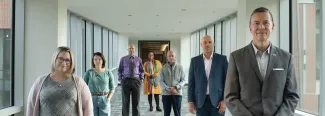
How Do We Prepare Students to Succeed in a Fractured Society?
The persistence of the “ivory tower” metaphor notwithstanding, the modern university is a profoundly porous institution, in a constant state of flux and exchange with the world around it. And UNE, with its emphasis on the health professions, the sciences, business innovation, and workforce development, is firmly on the most dynamic end of that spectrum.
As UNE President James Herbert explains, “We don’t live in a bubble, and we wouldn’t want to. We sometimes call ourselves a private university with a public mission. And that public mission means we’re intimately tied to the regional economy and the larger society.”
So, what happens to the university when society becomes increasingly chaotic and divided?
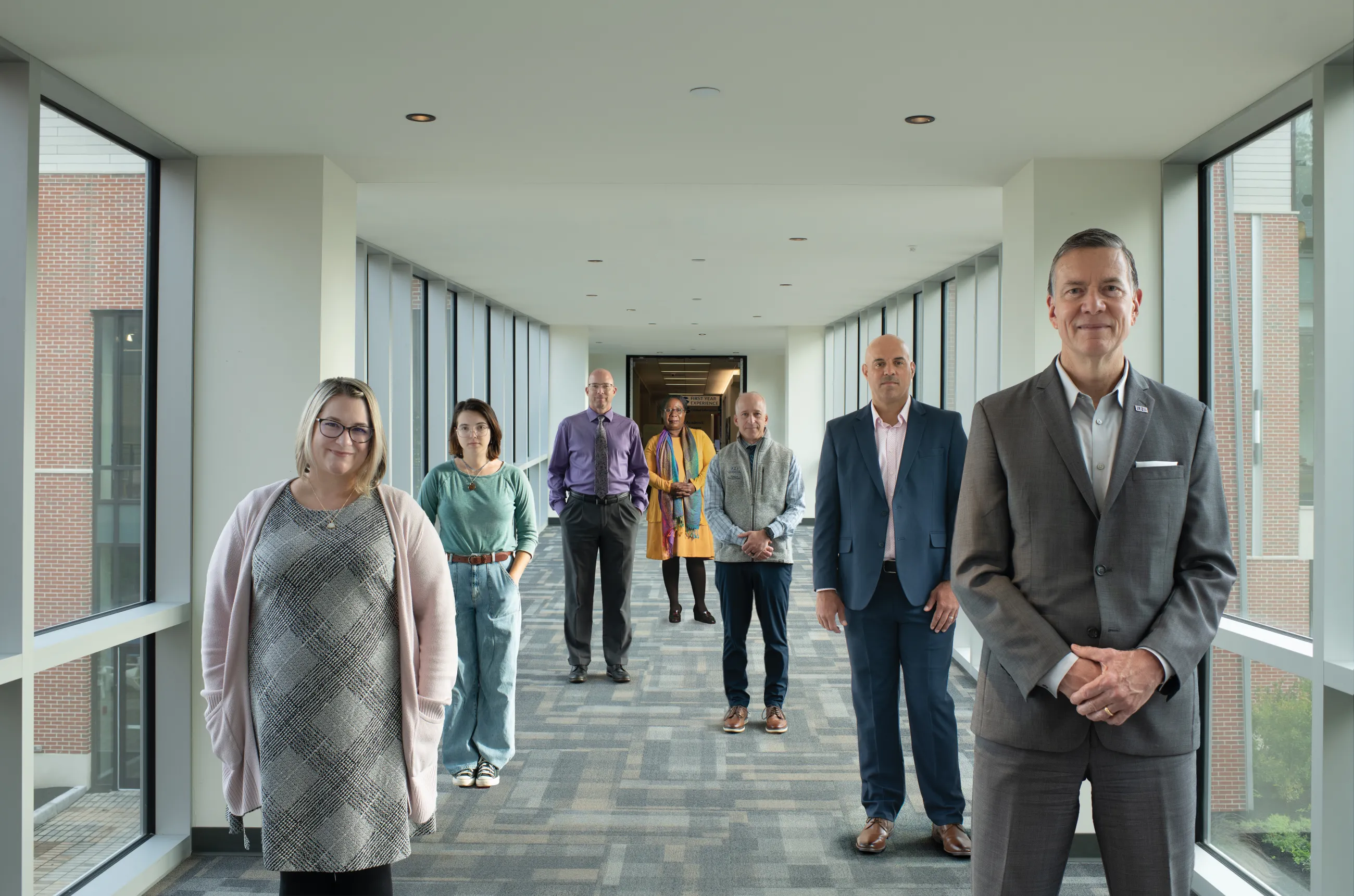
Everyone with a television and an internet connection understands that, currently, our world is in a state of exceptional tumult, as we scramble to deal with a never-ending stream of crises that impact all of our lives: the ongoing COVID pandemic; the rapidly escalating effects of climate change; the hyper-polarization of political views (with events like the January 6th assault on the Capitol and recent controversial Supreme Court decisions); widening economic disparity; inflation (felt acutely at gas pumps and supermarkets this past summer); social justice movements around race, class, and gender leading to heated confrontations (such as the Black Lives Matter movement sparked by the killing of Black people by the police); the effects of cancel culture; and the war in Ukraine, to name just some of the more obvious issues that have come to a boil over the past couple of years.
How does the current state of affairs affect the UNE community? How does it affect our teaching? How does it affect campus life and the student experience? What are we doing to adapt, to mitigate, to evolve our strategy so that we can continue our educational mission under today’s less-than-ideal conditions?
New Approaches to Student Wellness
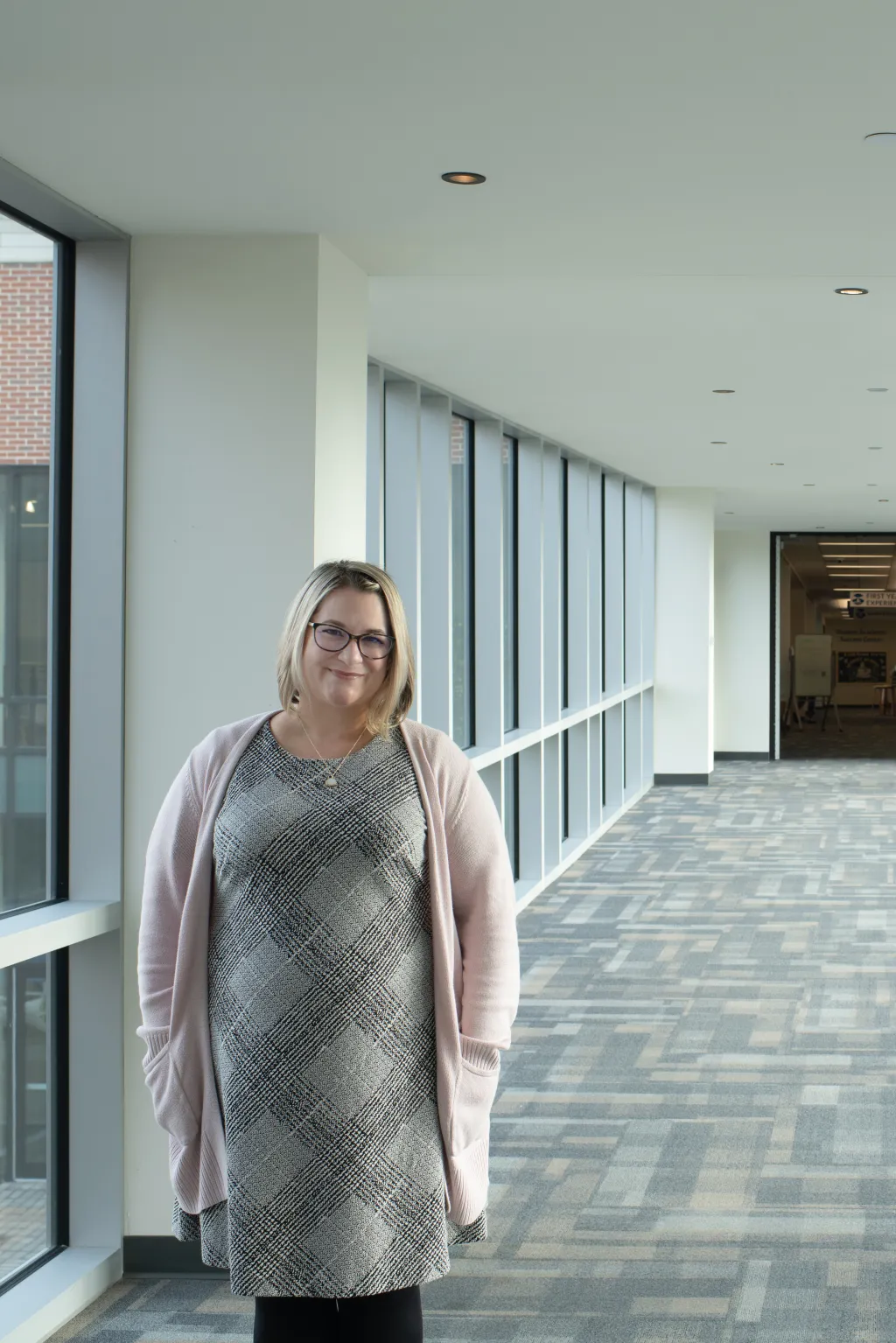
“We are living in a period of uncertainty,” says Jennifer DeBurro, M.Ed., vice president of Student Affairs and dean of students, “and we don’t know where that light is at the end of the tunnel. And when you’re in that place of uncertainty, you can’t rely on what you’ve always done.”
Emotional stress among students is being observed at crisis levels and is affecting students’ academic success and rate of degree completion, as noted by multiple sources, including the U.S. Surgeon General and the recently released Gallup/Lumina Foundation “State of Higher Education 2022 Report.”
For both Herbert and DeBurro, these kinds of reports are a sign that traditional approaches to student wellness, by themselves, are no longer sufficient.
In a recent joint editorial for Inside Higher Ed, they write, “Successfully addressing the mental health crisis in higher education will require more than adding counseling resources. We must reexamine the fundamental way we think about students’ wellbeing. We must be intentional and consistent in communicating messages of hope, strength, and resilience rather than those suggesting pathology and fragility. And we must do so in the context of multifaceted, coordinated networks of support and opportunities to grow students’ coping skills.”
Reorganizing Student Affairs
In that spirit, during the summer of 2021, DeBurro created an entirely new org chart in Student Affairs, moving the various units into three newly created “hubs”: a Graduate and Professional hub, a Community Engagement hub, and a Wellness hub.
“The idea is to get away from ingrained, siloed thinking and to find new approaches to the problems students are facing: finding community, dealing with stress,” she says. The realignment groups together formerly separate teams whose services seek to achieve similar outcomes.
One example is the new Wellness hub. “We’ve tried to change our thinking dramatically around harm and trauma,” says DeBurro, “and the notion that the only way to be well was to have a therapist and go to counseling. Now, there are people in our community who require a substantive therapeutic relationship, and we are working on ways to make those services easier to access, such as ‘Let’s Talk’ drop-in hours and things like that. But there are other folks, too, who just need someone to talk to, and it’s not always in that therapeutic environment. So, by grouping Outdoor Recreation, and Health and Wellness Education, and Counseling Services, and the Student Access Center, we saw these units that are all working along the continuum of wellness and said, ‘Okay, folks: now, work together.’”
Changing the Trauma Narrative to One of Resilience
Part of the goal is to build resilience in students. “With the pandemic, we kind of fell into this trauma narrative,” says DeBurro. “Which makes sense, of course: students were hurting; our entire community was hurting. But we can’t just talk about trauma and stop there. There’s this whole conversation that’s supposed to follow the acknowledgement of trauma and lead towards healing — and, for a while, we were missing the healing part.”
This goal dovetails with President Herbert’s message of “anti-fragility,” a phrase popularized by UNE’s 2022 Commencement speaker, the prominent writer and social critic (and NYU professor) Jonathan Haidt.
Herbert, a clinical psychologist whose specialty is cognitive therapy, believes that part of preparing students to succeed in a complex and uncertain world is providing them with the tools they need to work through discomfort.
As Herbert explains, “If you tell somebody they’re fragile, they internalize that message and that’s what ends up happening. But if you tell them, ‘You can do this, you’re strong,’ there’s a sense of empowerment that comes from that, and students learn to cope with uncomfortable situations and feel more confident about speaking their minds.”
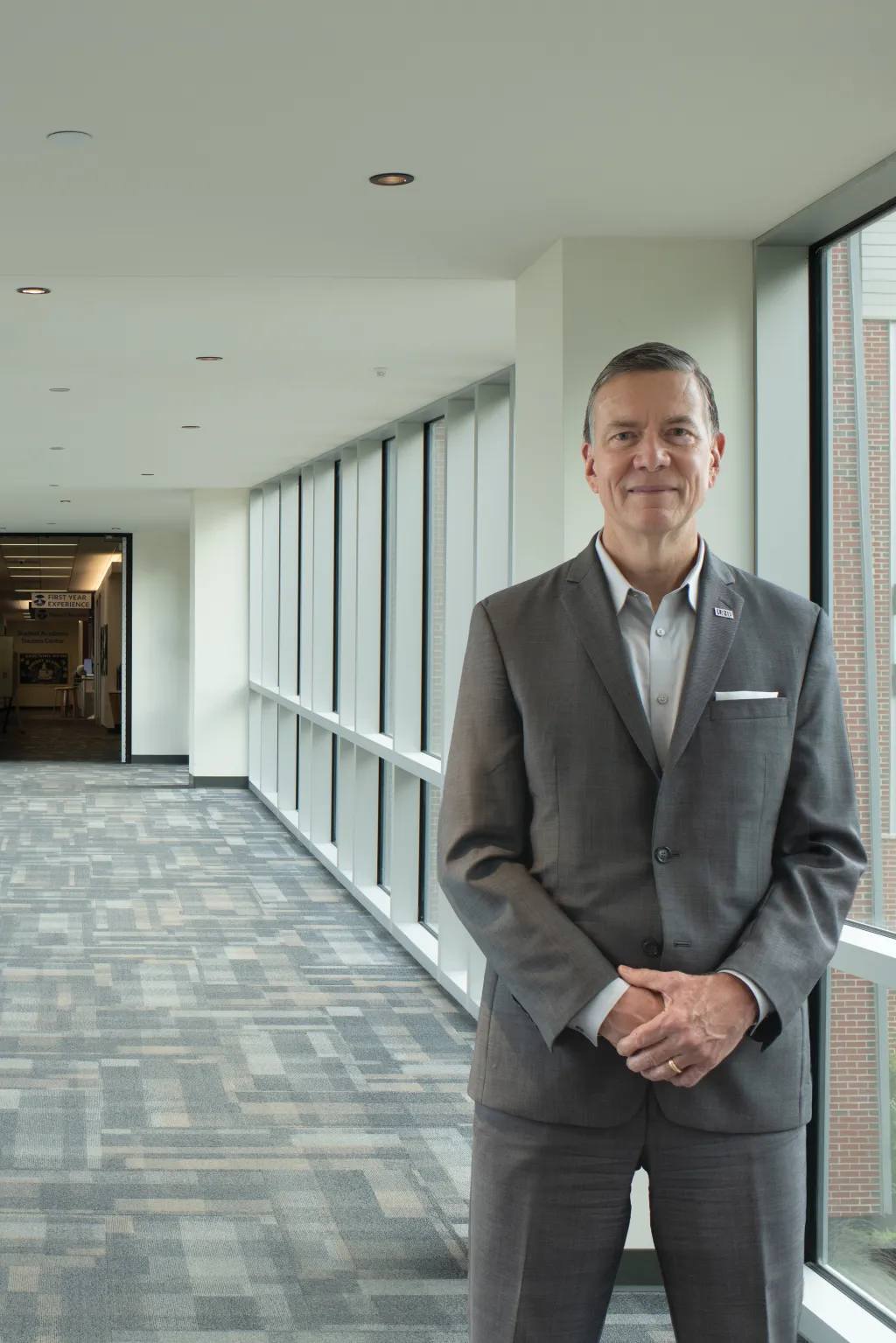
Student Discomfort
One place where students may feel uncomfortable about fully speaking their minds, these days, is in the classroom. “One of the things that has been reported on nationally,” says DeBurro, “and that we’ve seen reflected with our students here, is this real fear that in communicating their beliefs and opinions, they risk cancellation and being isolated from peers. There’s a lot of pressure to say the right thing or express their opinion in exactly the right way.”
Fostering a Marketplace of Ideas
Herbert is an outspoken advocate of the university as a “marketplace of ideas” and has worked hard to make UNE a place where free expression, open inquiry, and respectful debate are not only welcome but seen as crucial to the University’s mission.
To this end, Herbert has created a “Marketplace of Ideas” section on the UNE website underscoring the importance of ideological diversity and support for difficult conversations as key and distinguishing values for the UNE community. Herbert has worked with UNE librarians to create online resources around diversity, equity, and inclusion to help those looking for guidance when addressing controversial topics and for students, often overwhelmed by social media messages, to assess the quality and veracity of the information they encounter.
To fully embrace this work entails pushing back against the excesses of a call-out culture that sometimes inhibits classroom discourse — but there is a fine, and sometimes elusive, line between what some in the UNE community see as free expression and others experience as offensive. Herbert acknowledges the complexity but says, “There are legitimate issues to be discussed, and to assume that any questions that anybody raises are motivated by bigotry is, I think, misguided. We need to adopt a principle of charity and engage in good faith with people who think differently than we do.”
Although Herbert makes clear that students must be completely safe from violence, intimidation, harassment, and threats, the same does not hold true for intellectual and ideological safety. Discomfort, and even conflict, are often loci where growth and learning take place.
Modeling Reflective Discourse in the Classroom
As part of his philosophy class “Debating Ethics,” Andrew Rotondo, Ph.D., an associate teaching professor and assistant academic director in the School of Arts and Humanities, structures a series of debates. Students are put on teams that make philosophically based arguments on opposite sides of contentious contemporary issues, which requires them to explore and analyze perspectives that, previously, they might not have considered or taken seriously.
Recent topics have included gun control, immigration, and the practice of removing or renaming monuments and buildings whose eponyms have fallen out of contemporary favor. Rotondo finds that, once students see that the environment in the classroom is one of civil intellectual inquiry rather than a “battle,” they become comfortable and engaged in the discussions.
“Through most of our day-to-day lives, we each have a set of basic values and beliefs that we use to guide our actions and decisions,” says Rotondo. “While that’s good and necessary to live, there also need to be spaces in our society where those basic values and beliefs can be examined and questioned. That’s how we detect errors and make improvements. That’s the kind of space that I’m trying to facilitate in my classroom.”
Searching for Common Humanity
“Shying away from every moral controversy in our society would be an error,” Rotondo continues. “It would be detrimental to the intellectual development of our students and, ultimately, to the functioning and well-being of our society.”
“What I try to do — and it’s not easy — is to get students to see that most positions, no matter where you are on the political spectrum, contain at least a grain of truth. That grain may be surrounded by many falsehoods. But the true part still has value, and I’m trying to get students to see that and integrate it into their thinking.”
“Each position on these contentious social and political issues is held by real human beings, and there is something that is genuinely bothering them. And we can take it seriously and try to understand why, instead of dismissing and dehumanizing each other.”
Ultimately, says Rotondo, “I want to try to humanize the different sides for the students.”
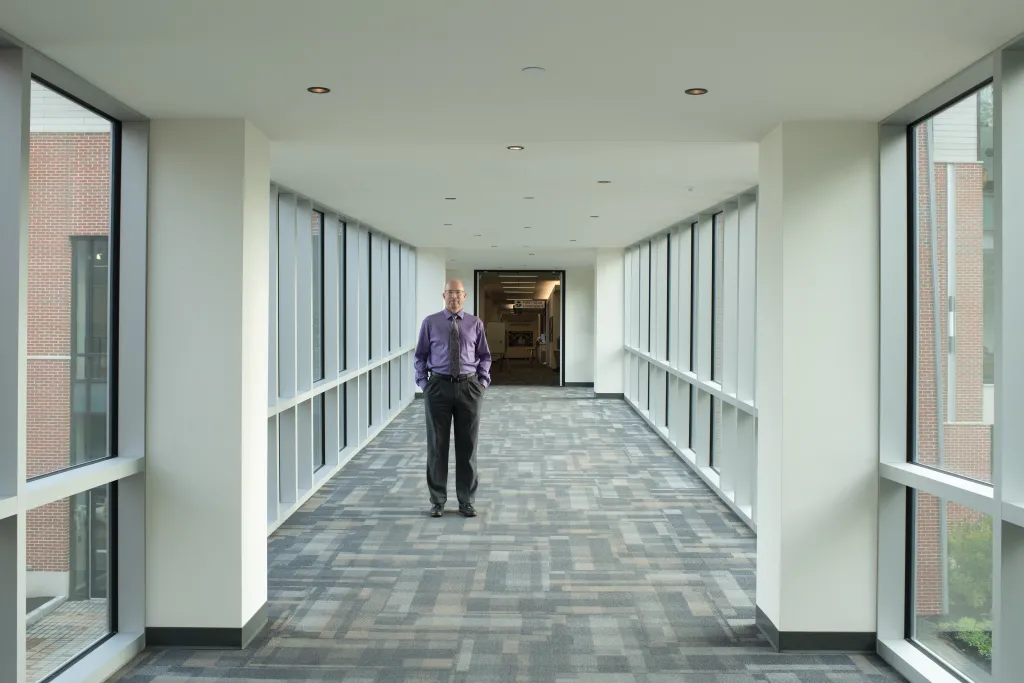
Bringing the Outside World into the Classroom
Marc Ebenfield, Ph.D., is the director of UNE’s Center for Excellence in Teaching and Learning (CETL), the office that provides resources and support to University educators in the ongoing pursuit of evidence-based, student-centered pedagogical excellence.
One trend Ebenfield has observed in recent years is the increasing porosity of the classroom space. “Students want to see more of that outside world reflected inside the classroom,” says Ebenfield, “and we have faculty coming to us to talk about how best to honor that.”
Faculty/Professional Learning Communities
To give faculty the tools they need to keep pace with rapidly evolving classroom norms, CETL has been sponsoring Faculty/Professional Learning Communities (FPLCs), in which faculty and professional staff come together in groups that meet regularly to address a given topic over the course of a school year or semester, with some kind of written report generated at the end.
The FPLCs fall under three main umbrellas, in direct response to real-world phenomena: alternative teaching formats, which corresponds to the pandemic-driven increase in online teaching — an unfamiliar modality to many faculty members; diversity, equity, and inclusion — which reflects society’s increasing concerns around race, ethnicity, and gender fluidity; and overall teaching effectiveness.
Part of the beauty of the FPLCs is that they are dialogue-driven, bringing together faculty from different disciplines to pool their experience because, as Ebenfield points out, “Different disciplines have different strengths.” By cross-pollinating things that work for different types of academic disciplines, the FPLCs make the entire UNE faculty stronger and foster a broader dialogue around pedagogical effectiveness.
Meeting Students Where They Are
Jonathan Millen, Ph.D., the dean of UNE’s College of Arts and Sciences (CAS), confirms that faculty are facing new challenges in working with students. “Over the last three years,” says Millen, “faculty members have had to constantly rethink how we do what we do, the amount of time that we spend in instruction, and the amount of time that we spend working with students to give them the support that they need.”
For many faculty members, this is new territory. “For example, faculty are working with students who are coming into college having learned on Zoom for the past two years,” says Millen.
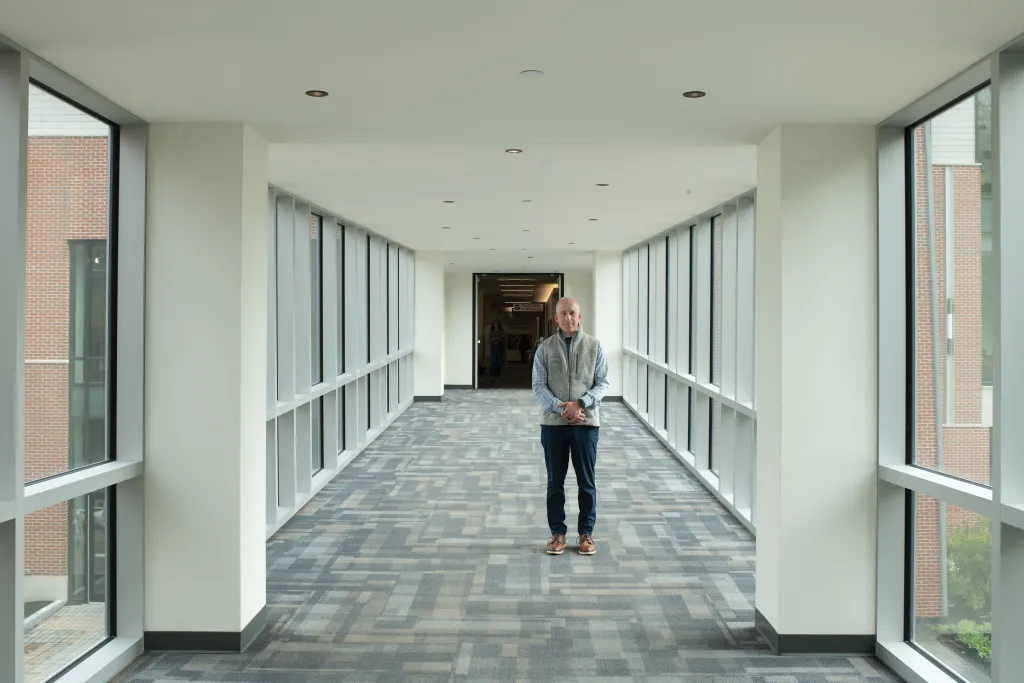
“We like to use the phrase ‘meet the students where they are,’ but we’re not even sure where they are right now because their experience has been so exceptional. Sure, we get there, eventually, but the amount of time invested is unlike anything I’ve ever seen before.”
Working with CETL
The students’ desire to see more of their own experiences or current events reflected in their class content represents an invaluable opportunity in the ongoing effort to add value and relevance to class materials — connecting curricular concepts with real-world phenomena.
But while it may be relatively easy for a professor of, say, political science to reference the day’s news, it takes more finesse to make those connections in areas like the hard sciences. And then there are the occasional crisis moments, following national disasters and the like, when any professor may need to take five minutes to allow students to express their thoughts and feelings before returning to the syllabus.
“We need to be supportive and acknowledge where the students are but without lowering the bar, so to speak,” says Millen. “And a lot of us just haven’t been well equipped to deal with some of these issues.” He credits CETL programming with helping to prepare faculty to teach more effectively in this societal moment.
In addition to the Faculty/Professional Learning Communities, CETL sponsors around a dozen regular pedagogically focused workshops every semester as well as two larger annual events, both of which feature a keynote speaker and workshopping: the half-day Faculty Forum in the fall and the day-long Faculty Symposium in the spring.
Chilling Effect
Additionally, the media is full of stories of faculty being sanctioned for actions and remarks taken out of context. Even if one believes that the media prevalence of the cancellation narrative is disproportionate to its actual rate of occurrence, the chilling effect such stories have is undoubtedly real. Says Ebenfield, “Despite the policies in place, faculty members have had concerns about whether or not they’re going to be supported by their program or by the University if they step in to deal with difficult issues.”
UNE has explicit written policies protecting the free speech rights of faculty and the principle of academic freedom. But in practice, chilling effects can sometimes override written policy — which is why President Herbert has gone to lengths nearly unprecedented in contemporary academia to foster a culture of open expression at UNE.
"I Have Your Back"
At the 2022 iteration of the annual Fall Assembly for faculty and professional staff, an event that celebrates the kickoff of a new school year, Herbert delivered an address centered on this theme.
“Today,” said Herbert, “I make you this promise: when any of you, members of our faculty or professional staff, engage in good-faith efforts to promote difficult conversations on campus, should you face criticism from students or others for doing so, I will have your back. And I will make sure your deans and your supervisors have your back. Needless-to-say, I don’t intend this to be a carte blanche for inappropriate behavior. Promoting hard conversations must be done with sensitivity and respect. But we will not follow the path of so many of our peer institutions, which now prioritize avoiding the risk of controversy and placating angry mobs over open discourse, thereby creating a stifling climate of fear and intimidation. I have your back.”
To underscore the message, Herbert used the occasion to announce a new award: The President’s Award for Constructive Discourse, actually two annual $1,000 awards, one for faculty and one for professional staff (because so many of these conversations occur outside of the classroom) to acknowledge individuals who intentionally promote constructive dialogue on difficult or controversial topics within the UNE community.
“We Nor’easters,” Herbert concluded, “have the opportunity to assume a leadership role in this work among American universities.
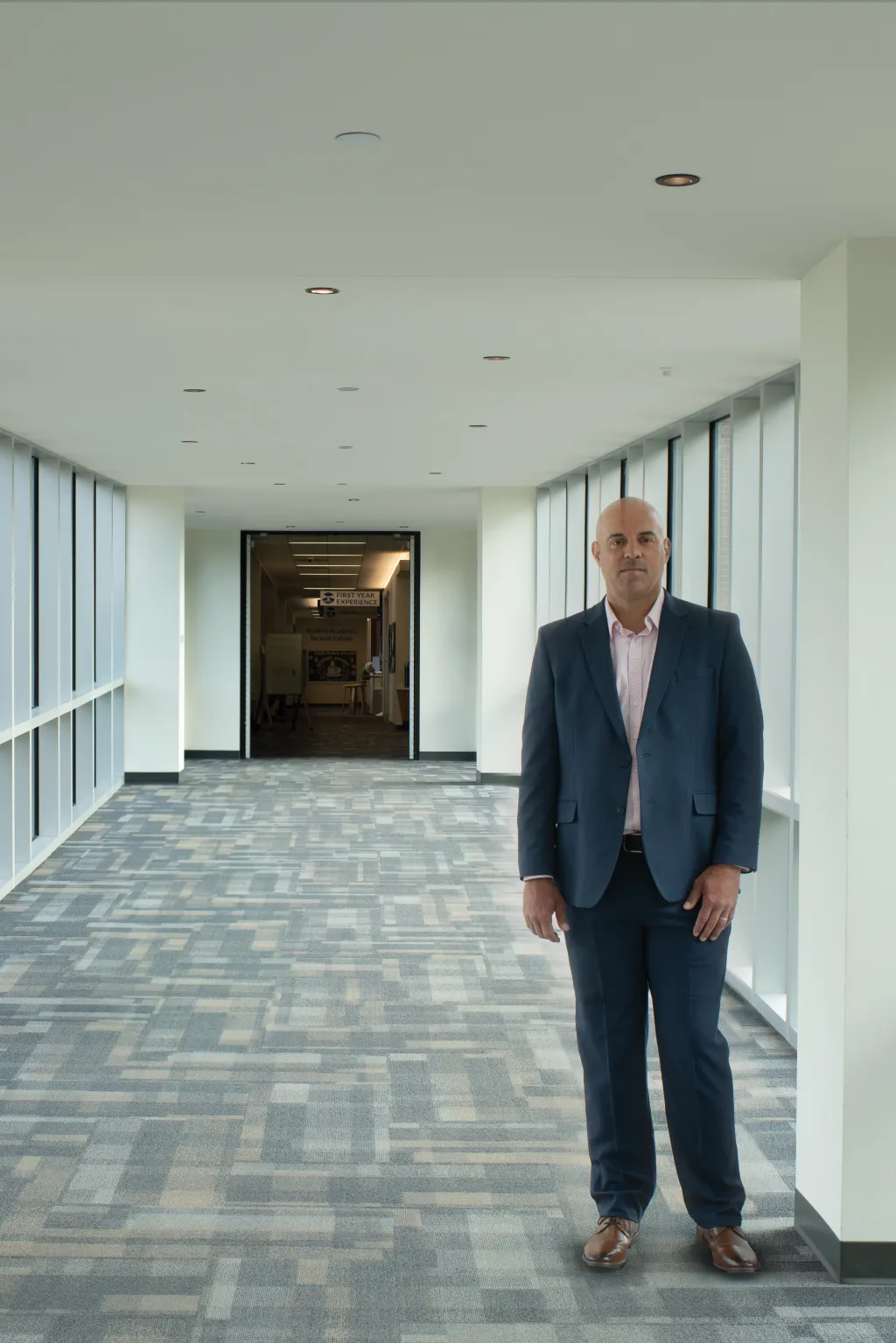
By doing so we will not only distinguish UNE among our peers, but, more importantly, we will be doing our part to address the challenges facing our troubled world.”
Intent vs. Impact
Ed Silva, M.S.W., the head coach of UNE’s men’s basketball team and UNE’s interim associate vice provost for Diversity, Equity, and Inclusion refers to a YouTube video titled “How To Tell Someone They Sound Racist” by DJ and cultural commentator Jay Smooth, from 2008. “His message is,” says Silva, “‘Don’t talk about who they are; talk about what they said.’ That way, you’re not backing somebody into a corner. Instead, you’re really trying to engage them in conversation to see where they were coming from. Because sometimes what they said was not what they meant. It’s the whole notion of intent versus impact.”
Of course, we must acknowledge impact, says Silva. “We’re not going to tolerate people who speak hatefully or who intentionally bully or try to hurt people,” he states unequivocally. “But at the same time, we can’t just shut people off if they say something that we don’t agree with. Because there could be opportunities for growth in those exchanges.”
Most of the conflict Silva observes on UNE’s campuses is, thankfully, spurred by actions that do not cross the threshold of intentional racist or hate speech. Many microaggressions are, for better or worse, unintentional — the product of cultural presets or curiosity or even well-intentioned allies speaking or acting clumsily. And while Silva readily acknowledges that these encounters can cause genuine pain and offense, if we really want to move the needle, he thinks we should try to see them as educational opportunities.
Calling Out vs. Calling In
“I’ve been called out because I am not a huge proponent of cancel and call-out culture,” says Silva. “But I say, ‘What is our goal?’ My goal is to try to create environments that are inclusive and equitable for everyone — knowing the history, knowing that there are some groups that have less privilege in a particular context than other groups, knowing that some groups have been marginalized and oppressed. That is important, and as I mentioned, there are times where, frankly, you have to call out. But in general, I’m more into calling in. And by calling in, I don’t mean we’re not holding people accountable for what they say and what they do. However, as a university, I believe we also have a responsibility to use these moments for opportunities to facilitate growth.”
Fall DEI Initiatives
Carol Ewan Whyte, Ph.D., M.Sc., the assistant director of Public Health Research and Service at UNE Online and co-chair of UNE’s Committee on Community, Equity, and Diversity, has been leading a search committee to hire a new full-time associate provost for DEI, hopefully this fall (2022). (The position has been filled by Ed Silva on an interim basis since the summer of 2021.)
This is just one item on a long list of initiatives she and her colleagues around the University are currently pursuing. “All the colleges,” says Whyte, “and some of the centers of excellence, have individual diversity, equity, and inclusion committees, and they continue to meet to do their work. So that’s continuing, and we do have faculty advisors working with the different student groups to ensure that we keep the momentum going.”
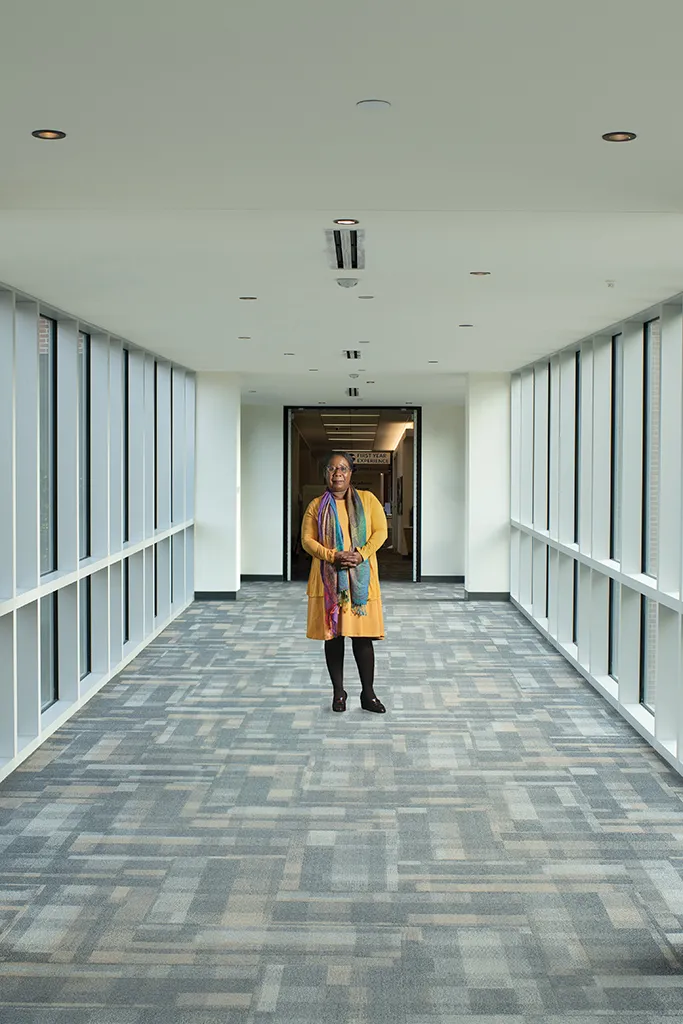
In addition, UNE is exploring a number of initiatives to recruit more students, faculty, and professional staff from diverse backgrounds. For example, the University’s first lady (and psychology professor) Lynn Brandsma, Ph.D., is spearheading an effort to build pipelines from several historically Black colleges and universities to UNE’s College of Osteopathic Medicine.
Other high-priority initiatives include looking at curricula across the University to ensure that in all the colleges, different aspects of diversity and inclusion are incorporated according to their impact on different disciplines.
“Basically,” says Whyte, “we’re making sure that our curricular offerings reflect the different things that are happening in the world so that our students are truly prepared to go out into this diverse workplace and succeed. Not just by having the technical knowledge but also the soft skills of empathy, respect for all kinds of diversity, and just being mindful of all the things that are happening now.”
No Voice Unheard
For Whyte, a crucial piece of her work is ensuring that no one on campus, especially no student, feels isolated or alone — their voice unheard, their feelings unvalidated. “We don’t want anyone to think that there isn’t anywhere they can go,” says Whyte. “We need to make sure that people understand where to go for help if something happens, who they can reach out to — even if it’s just that they have some ideas they want to talk about, or they just need a listening ear…Just making sure that our community members know where to go for those resources, I think that is so very important.”
United by Mission
Universities are inherently hopeful places. Students embody the future — and wherever there is a community of passionate, talented people pursuing knowledge, skills, and solutions, a concurrent abundance of hope is always generated.
“If the goal can be continuous improvement,” says Jonathan Millen, “then I feel very good about things. I think on the most important issues at UNE, from what I’ve seen, the faculty and the administration can really work together toward a common goal. That doesn’t mean we agree on everything, but there really is a shared sense of spirit about the planet, about our place in it, and about the need to do good and to do well. That spirit contextualizes everything we do. So, when we do have disagreements, they happen under that umbrella. There are many institutions where it’s the opposite: the division comes first and then the mission. I know it’s what attracted me to come here. I know it sounds very superficial to say, but there’s something special here. So, while the issues are as challenging as we could ever imagine, I’d rather be dealing with them here than somewhere else.”
Connecting to a Larger Purpose
President Herbert finds similar integrity in UNE’s sense of mission. “I think what we do better than at most places,” says Herbert, “is make sure that each student finds their passion and feels that sense of connection to a larger purpose.” Of course, we want to give students knowledge and skills they need to succeed in the world, but, says Herbert, it’s important that they pursue that knowledge in the service of something greater than themselves.
“It’s much easier to face the real world and all these problems if you feel like, ‘Okay, I may not be able to solve it all, but I’m doing my part to move the needle, in some way.’ If people can feel engaged, and they know that there’s something they can do that, even in a small way, makes a difference, then I think that is the key. Because if you can connect with that value, if you can connect with that mission, then ultimately, you get to live a life that feels meaningful.”
To Each Their Own Part
Virginia Grace May, an environmental science major entering her junior year (she is in the 4+1 B.S./M.S. program and will be continuing on to graduate study at UNE in fall ’25) works with Professor Tom Klak, Ph.D., on the Chestnut Tree Project, a large-scale undertaking that aims to restore the blighted American chestnut tree by breeding fungus-resistant seedlings.
“It’s about focusing on something that makes you happy, something you’re passionate about, that gives you hope,” says May. “I’m on the chestnut tree project because I believe that focusing on a couple of specific things can make the world a better place in a very small way. Because everything is interconnected, and all the small things add up. It’s something we can do so the world isn’t just, like, one big dumpster fire. I saw a story where this one guy single-handedly saved a butterfly population just because he liked planting stuff in his yard. It was like the butterfly effect, basically, but with actual butterflies!”
The other thing that gives May hope is the community she’s found at UNE. “I know it sounds really, really cheesy, but you have to let yourself be inspired by other people in their work. Instead of, ‘Oh no, I’m just one person,’ you can be a part of something. Sure, you’re going to feel overwhelmed sometimes, but you can also allow yourself to be supported by other people, and you can allow yourself to support other people.”
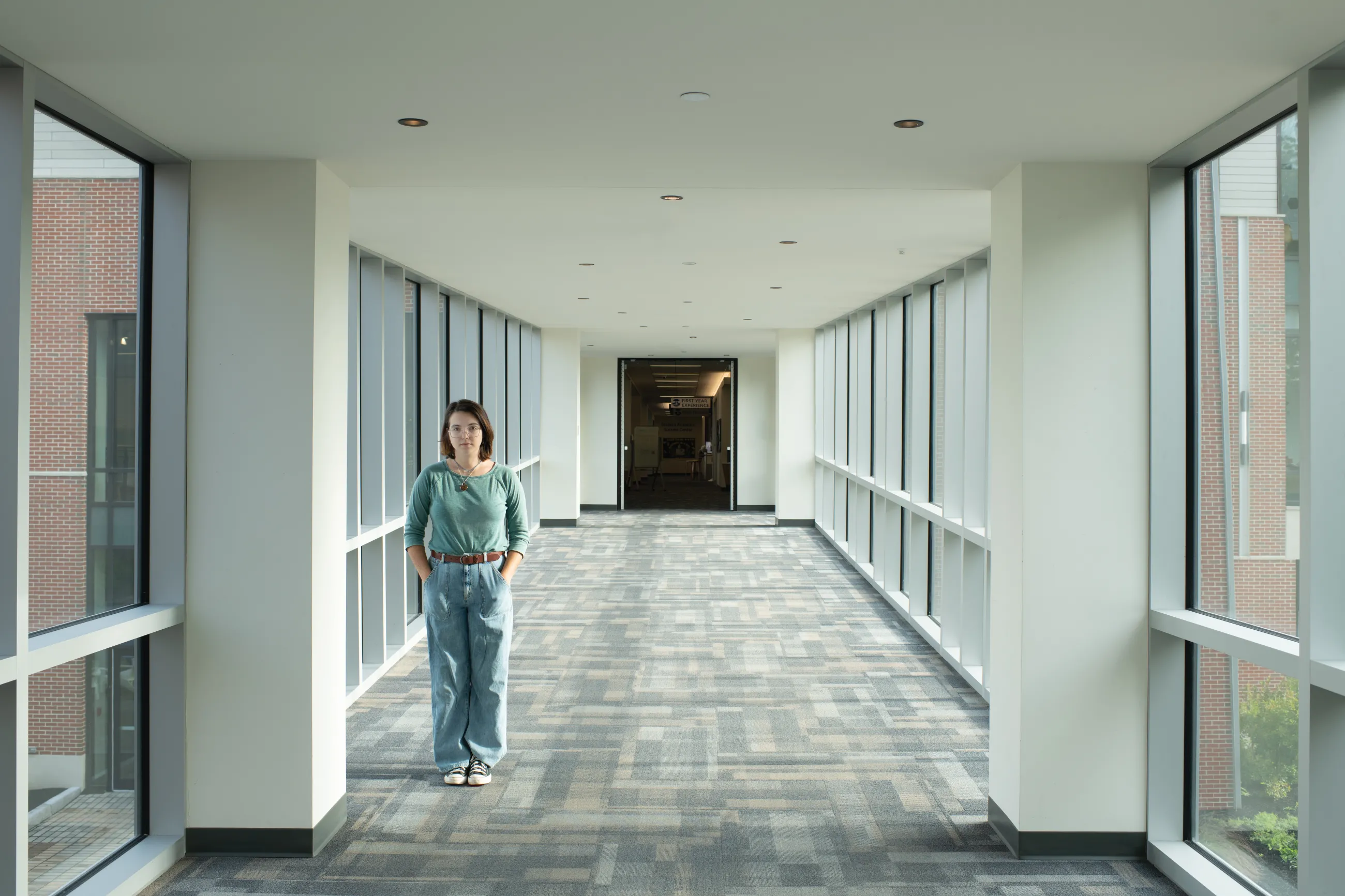
If It Wasn't Challenging, It Wouldn't Be Rewarding!
“DEI is a tricky field, you know?” Carol Ewan Whyte says with a laugh. “Trying to walk the balance. It’s really a tightrope, making sure all sides are happy. But I think we’re getting there, and we’re making progress. And it’s really good work. It’s very rewarding work. It’s stressful at times. But very rewarding.”
It all comes back to that sense of underlying mission that makes the UNE community so special. “What I really love is the energy at UNE,” says Whyte. “There’s so much positive energy here. People genuinely care about each other and making sure we all have a welcoming and inclusive community. And a lot of people all across the University are really working hard to make sure we keep that fire burning.”